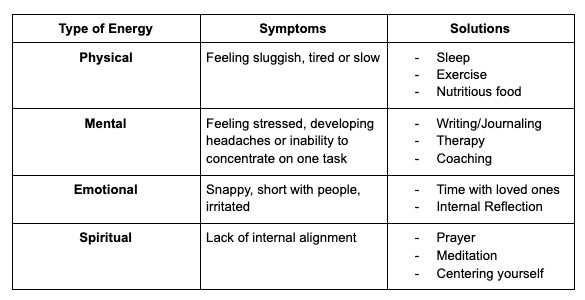Trust the process
The framework behind achieving sustainable success in any field.
Let’s start off by looking at rest from an athlete’s perspective. A typical year as an athlete is divided into three periods: the regular season, the playoffs and the off-season. Most people think success is determined in the regular season or the playoffs — it's where stats are recorded, highlights happen and players are celebrated.
But the real money is made in the off-season. When players rest, work on their skills, develop their bodies and come back ready to execute. The same applies in the workplace.
Nowadays, we live in an always-on culture. Instagram influencers preach #hustlehard, #grinddontstop and countless other trends centered around working long hours and experiencing short term pain for long term gain.
The truth is, these trends put you straight on the road to burnout. At a certain point, the late nights and early mornings add up and you crash.
The key to overcoming this is establishing sustainable routines, scheduling consistent time off and practicing habits that allow you to recharge on a regular basis. But everything starts from understanding your own energy. So let’s break it down.
The first step to recharging effectively is understanding what type of energy you need to restock. I divide energy into 4 types:
As fatigue in each area produces different symptoms, it's important to understand how to diagnose each so you take the right action that helps you recharge proactively, rather than waiting until things get worse.
Physical fatigue is the most commonly diagnosed form of energy deficit. Usually, you’ll start to feel sluggish, tired and slow.
Mental fatigue comes from having a lot on your mind. It might surface as feeling stressed, developing headaches or inability to concentrate on one task due to overwhelm.
Emotional fatigue shows up due to a lack or surplus of social interactions with people we love. This is shown through snappy behaviour, being short with people, or a general feeling of irritation.
Spiritual fatigue is the least commonly diagnosed form of energy. It generally comes from lack of alignment, either with your internal motivators like your purpose or your overall feeling of connection with a higher power.
Once you’ve diagnosed your energy deficit, you can pair it with an activity that helps you recover.
Restful activities are different for everyone, regardless of the type of energy deficit you might have.
One helpful question to figure this out is:
For me, it's being on a basketball court, alone. Something about the ball swishing through the net creates an irreplaceable sense of serenity.
But different activities have different purposes. I find choosing matching one activity for each type of energy deficit gives you the best toolkit to recharge, regardless of your situation.
My top 4 are:
The following table contains a list of solutions you can reference for each type of deficit.

Once you’ve identified the activities that give you energy, the next step is scheduling them regularly.
Bestselling author and podcast host, Jay Shetty recommends introducing a cadence of breaks on a daily, weekly, monthly and quarterly basis to reduce the intensity of the typical work week while increasing overall productivity.
Here are some examples of breaks you can implement in your work schedule:
The key is to schedule these breaks as “minimums”, non-negotiable periods that can’t be moved regardless of what happens at work. Each break will help you return to work refreshed and help you accomplish more over the long run by reducing the volatility that usually comes with burnout.
Knowing how to manage your energy effectively can transform your life. The Power of Full Engagement by Jim Loehr and Tony Schwartz breaks down the concept of energy management and why it's actually more important than time management for high performers.
I’ll end with this. Learning how to rest effectively is equally as important to achieving your goals as putting in the work. So next time you’re taking a break, don’t feel guilty. Know that you're in your own mini-offseason and giving yourself the space to grow.
The framework behind achieving sustainable success in any field.
Once a month, I write an in-depth essay breaking down principles from sports that help you scale your startup, your career, and yourself.
Subscribe now so you don’t miss them.
No spam, ever. Unsubscribe at any time with one click.